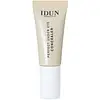What's inside
What's inside
 Key Ingredients
Key Ingredients

No key ingredients
 Benefits
Benefits

 Concerns
Concerns

 Ingredients Side-by-side
Ingredients Side-by-side

Water
Skin ConditioningIsononyl Isononanoate
EmollientC12-15 Alkyl Benzoate
AntimicrobialCaprylic/Capric Triglyceride
MaskingPEG-30 Dipolyhydroxystearate
EmulsifyingGlycerin
HumectantEthylhexyl Palmitate
EmollientBoron Nitride
AbsorbentPolyglyceryl-2 Oleate
EmulsifyingPhenoxyethanol
PreservativeDisteardimonium Hectorite
StabilisingPolyhydroxystearic Acid
EmulsifyingMagnesium Sulfate
Ethylhexylglycerin
Skin ConditioningDisodium Stearoyl Glutamate
CleansingPolyglyceryl-2 Stearate
EmulsifyingSodium Dehydroacetate
Preservative1,2-Hexanediol
Skin ConditioningCaprylyl Glycol
EmollientDisodium EDTA
Aluminum Hydroxide
EmollientCI 77891
Cosmetic ColorantCI 77492
Cosmetic ColorantCI 77491
Cosmetic ColorantCI 77499
Cosmetic ColorantWater, Isononyl Isononanoate, C12-15 Alkyl Benzoate, Caprylic/Capric Triglyceride, PEG-30 Dipolyhydroxystearate, Glycerin, Ethylhexyl Palmitate, Boron Nitride, Polyglyceryl-2 Oleate, Phenoxyethanol, Disteardimonium Hectorite, Polyhydroxystearic Acid, Magnesium Sulfate, Ethylhexylglycerin, Disodium Stearoyl Glutamate, Polyglyceryl-2 Stearate, Sodium Dehydroacetate, 1,2-Hexanediol, Caprylyl Glycol, Disodium EDTA, Aluminum Hydroxide, CI 77891, CI 77492, CI 77491, CI 77499
Water
Skin ConditioningC13-15 Alkane
SolventZinc Oxide
Cosmetic ColorantC12-15 Alkyl Benzoate
AntimicrobialPropanediol
SolventPolyglyceryl-6 Polyricinoleate
EmulsifyingPentylene Glycol
Skin ConditioningDisteardimonium Hectorite
StabilisingDistarch Phosphate
AbsorbentZinc Stearate
Cosmetic ColorantPolyglyceryl-2 Isostearate
EmulsifyingTriethoxycaprylylsilane
Ceramide AP
Skin Conditioning1,2-Hexanediol
Skin ConditioningMagnesium Sulfate
Sodium Benzoate
MaskingSodium Dehydroacetate
PreservativeSodium Myristoyl Glutamate
CleansingLecithin
EmollientAluminum Hydroxide
EmollientTocopherol
AntioxidantAscorbyl Palmitate
AntioxidantStearic Acid
CleansingCitric Acid
BufferingCI 77891
Cosmetic ColorantCI 77492
Cosmetic ColorantCI 77491
Cosmetic ColorantCI 77499
Cosmetic ColorantWater, C13-15 Alkane, Zinc Oxide, C12-15 Alkyl Benzoate, Propanediol, Polyglyceryl-6 Polyricinoleate, Pentylene Glycol, Disteardimonium Hectorite, Distarch Phosphate, Zinc Stearate, Polyglyceryl-2 Isostearate, Triethoxycaprylylsilane, Ceramide AP, 1,2-Hexanediol, Magnesium Sulfate, Sodium Benzoate, Sodium Dehydroacetate, Sodium Myristoyl Glutamate, Lecithin, Aluminum Hydroxide, Tocopherol, Ascorbyl Palmitate, Stearic Acid, Citric Acid, CI 77891, CI 77492, CI 77491, CI 77499
Ingredients Explained
These ingredients are found in both products.
Ingredients higher up in an ingredient list are typically present in a larger amount.
1,2-Hexanediol is a synthetic liquid and another multi-functional powerhouse.
It is a:
- Humectant, drawing moisture into the skin
- Emollient, helping to soften skin
- Solvent, dispersing and stabilizing formulas
- Preservative booster, enhancing the antimicrobial activity of other preservatives
Aluminum Hydroxide is a form of aluminum. It can be naturally found in nature as the mineral gibbsite. In cosmetics, Aluminum Hydroxide is used as a colorant, pH adjuster, and absorbent.
As a colorant, Aluminum Hydroxide may add opacity, or reduce the transparency. Aluminum hydroxide is contains both basic and acidic properties.
According to manufacturers, this ingredient is an emollient and humectant. This means it helps hydrate the skin.
In medicine, this ingredient is used to help relieve heartburn and help heal ulcers.
There is currently no credible scientific evidence linking aluminum hydroxide in cosmetics to increased cancer risk.
Major health organizations allow the use of aluminum hydroxide in personal care products and have not flagged it as a carcinogenic risk at typical usage levels.
Learn more about Aluminum HydroxideC12-15 Alkyl Benzoate is made up of Benzoic Acid and long chain alcohols. It has a low molecular weight.
C12-15 Alkyl Benzoate is an emollient and texture enhancer. Due to its solubility, it is often used in sunscreens to help evenly distribute active ingredients.
As an emollient, C12-15 Alkyl Benzoate helps soften and hydrate your skin. Emollients create a film on your skin that traps moisture within.
This ingredient has been reported to cause eye irritation.
Learn more about C12-15 Alkyl BenzoateCi 77491 is also hydrated iron III oxide. It's sole purpose is to give a red/pink hue to products.
Iron III oxides are classified as inorganic chemicals for coloring.
Synthetically created Ci 77491 is considered safer than those naturally found. This is because the synthetically created version may contain less impurities. Iron oxides are generally non-toxic and non-allergenic.
Learn more about CI 77491Ci 77492 is also hydrated iron III oxide. It's sole purpose is to give a yellow hue to products.
Iron III oxides are classified as inorganic chemicals for coloring.
Synthetically created Ci 77492 is considered safer than those naturally found. This is because the synthetically created version may contain less impurities. Iron oxides are generally non-toxic and non-allergenic.
Learn more about CI 77492Ci 77499 is also hydrated iron III oxide. It is created from mixing red and black iron oxides. This helps give shades of darkness to a product.
Iron III oxides are classified as inorganic chemicals for coloring.
Ci 77891 is a white pigment from Titanium dioxide. It is naturally found in minerals such as rutile and ilmenite.
It's main function is to add a white color to cosmetics. It can also be mixed with other colors to create different shades.
Ci 77891 is commonly found in sunscreens due to its ability to block UV rays.
Learn more about CI 77891Disteardimonium Hectorite comes from the clay mineral named hectorite. It is used to add thickness to a product.
It can also help stabilize a product by helping to disperse other ingredients.
Hectorite is a rare, white clay mineral.
Learn more about Disteardimonium HectoriteMagnesium Sulfate is a salt. More specifically, it is an epsom salt, or the bath salt used to help relieve muscle aches.
Despite having ‘sulfate’ in the name, it isn’t a surfactant or cleansing agent like sodium lauryl sulfate. Unlike those sulfates, magnesium sulfate doesn’t have the same cleansing or foaming properties (it's simply a type of salt).
In cosmetics, Magnesium Sulfate is used to thicken a product or help dilute other solids. It is a non-reactive and non-irritating ingredient.
One study shows magnesium deficiency may lead to inflammation of the skin. Applying magnesium topically may help reduce inflammation.
You can find this ingredient in sea water or mineral deposits.
Learn more about Magnesium SulfateThis ingredient is a preservative with antimicrobial properties. It is the sodium salt of dehydroacetic acid.
It is especially effective at preventing bacterial and fungal growth in low concentrations.
Water. It's the most common cosmetic ingredient of all. You'll usually see it at the top of ingredient lists, meaning that it makes up the largest part of the product.
So why is it so popular? Water most often acts as a solvent - this means that it helps dissolve other ingredients into the formulation.
You'll also recognize water as that liquid we all need to stay alive. If you see this, drink a glass of water. Stay hydrated!
Learn more about Water